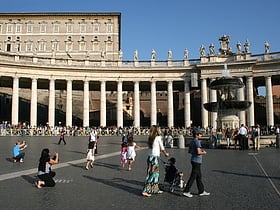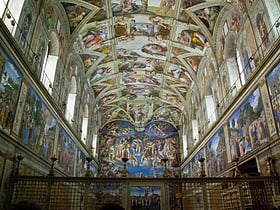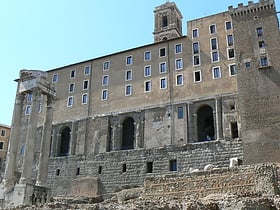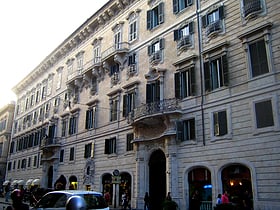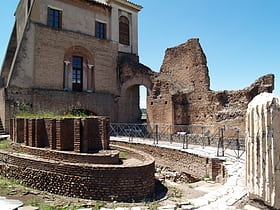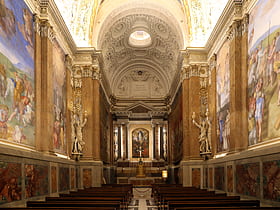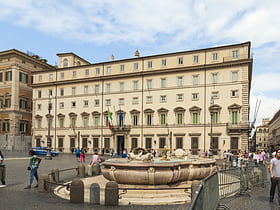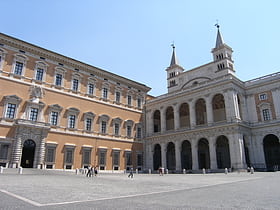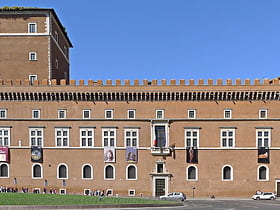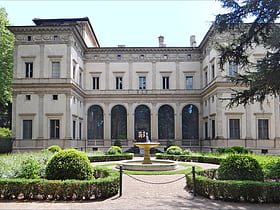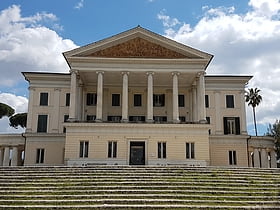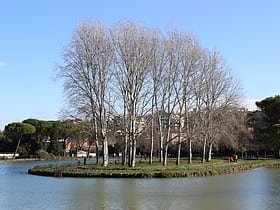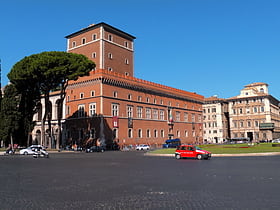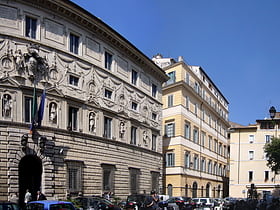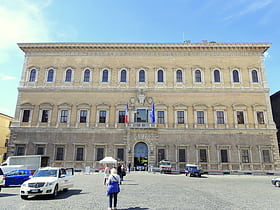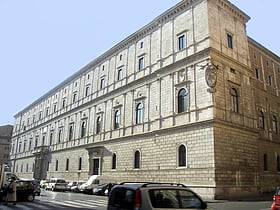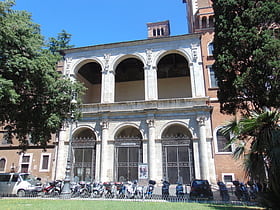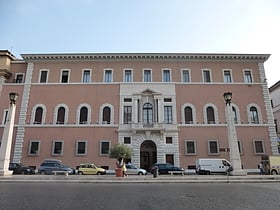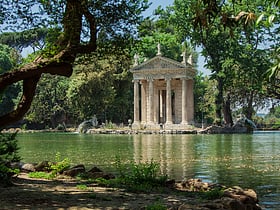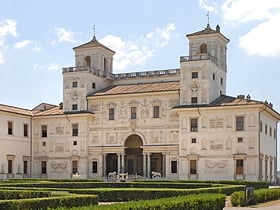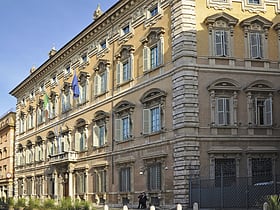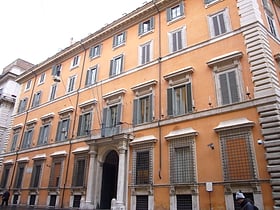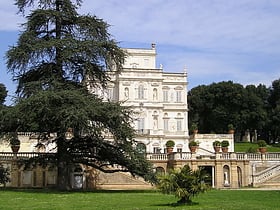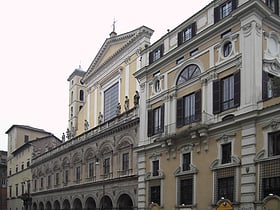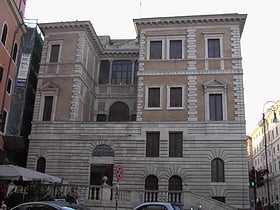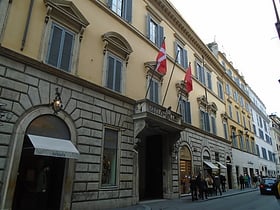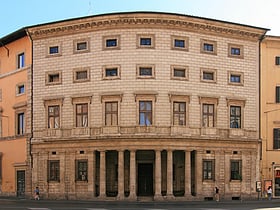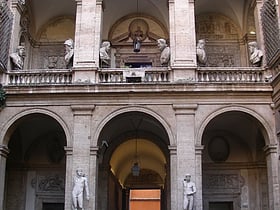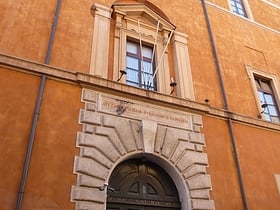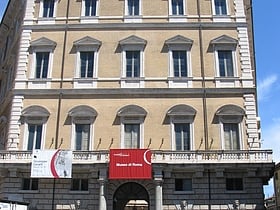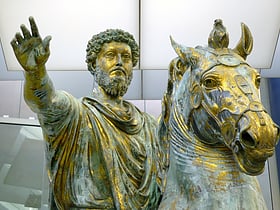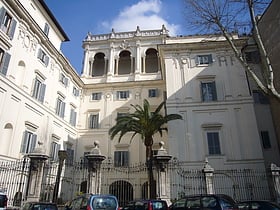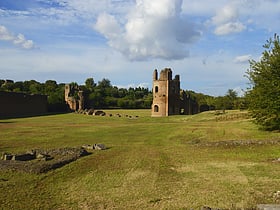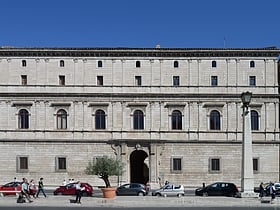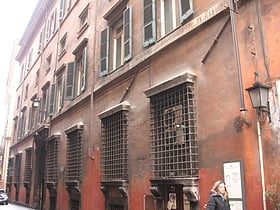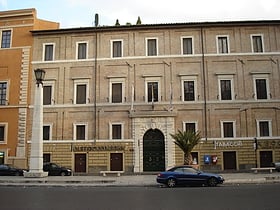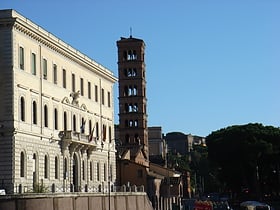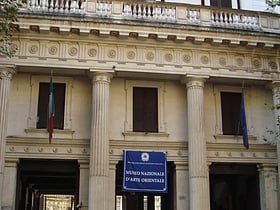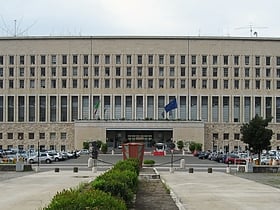Rome: Vernacular Architecture
Places and attractions in the Vernacular architecture category
Categories
- Church
- Baroque architecture
- Historical place
- Museum
- Palace
- Sacred and religious sites
- Vernacular architecture
- Architecture
- Street
- Art museum
- Ancient Roman architecture
- Ruins
- Fountain
- Park
- Monuments and statues
- History museum
- Square
- Bridge
- Temple
- Renaissance architecture
- Neighbourhood
- City gate
- Romanesque architecture
- Specialty museum
- Arch
- Theater
- Cemetery
- Catacombs
- Archaeological site
- Historic walking areas
- Concerts and shows
- Sport
- Sport venue
- Giacomo della Porta
- Hill
- Gianlorenzo Bernini
- Art gallery
- Tomb
- Francesco Borromini
- Shopping
- Natural attraction
- Archaeological museum
- Martino Longhi il Vecchio
- Unesco
- Carlo Maderno
- Library
- Carlo Rainaldi
- Spiritual
- Opera
- Arenas and stadiums
- Aqueduct
- Nature
- Modern art museum
- Mausoleum
- Obelisk
- Giovanni Battista Soria
- Giovanni Antonio De Rossi
- Tower
- Forts and castles
- Music venue
- Garden
- Golf
- Hotel
- Gothic Revival architecture
- Nightlife
- Baths
- Amusement park
- Memorial
- Shopping centre
Apostolic Palace
Pope's official residence in Vatican The Apostolic Palace, also known as the Papal Palace, Vatican Palace, or Palace of the Vatican, is an iconic structure located within Vatican City, Rome. It is the official residence of the Pope, the head of the Catholic Church, and a site of great historical...
Sistine Chapel
Michelangelo's iconic painted ceiling The Sistine Chapel, nestled within the Vatican City in Rome, stands as a monumental testament to Renaissance art and religious reverence. This sacred site, consecrated in 1483, is renowned for its exquisite frescoes that adorn the interior, most notably the ceiling...
Tabularium
The Tabularium, nestled in the heart of Rome, Italy, is a testament to the ancient city's rich history and architectural prowess. Once the official records office of Rome, it now stands as a museum that offers a window into the storied past of one of the world's oldest...
Palazzo Doria Pamphilj
Tours of opulent 18th-century apartments Nestled in the heart of Rome, the Palazzo Doria Pamphilj is a magnificent example of Italian nobility and artistry, transformed into a museum that houses one of the city's richest private art collections. The palazzo, with its grand architecture and opulent interiors...
Flavian Palace
The Flavian Palace, also known as Domus Flavia, is an intricate part of the vast palace complex on the Palatine Hill in Rome, Italy. Constructed during the Flavian dynasty, this grand edifice was erected under the reign of Emperor Domitian in the late 1st century AD.
Cappella Paolina
Nestled within the heart of Rome, the Cappella Paolina, or Pauline Chapel, stands as a hidden gem of artistic and religious significance. Located within the Apostolic Palace of the Vatican City, this intimate chapel is not as widely known as its neighbor, the Sistine...
Chigi Palace
The Chigi Palace, nestled in the heart of Rome, Italy, is an embodiment of Renaissance elegance and architectural finesse. This grand palace, characterized by its harmonious proportions and sumptuous detailing, offers visitors a glimpse into the opulent lifestyle of...
Lateran Palace
The Lateran Palace, an ancient edifice with a storied past, stands proudly in the heart of Rome, Italy. As the former papal residence, this palace has been a central figure in the religious and political history of the city.
Museo nazionale del Palazzo di Venezia
Nestled in the heart of Rome, the Museo Nazionale del Palazzo di Venezia is an emblematic cultural institution that offers a deep dive into the artistic and historical treasures of Italy. Housed in the stately Palazzo Venezia, a building with a storied past that dates...
Villa Farnesina
Renaissance villa with famous frescoes Nestled along the banks of the Tiber River in Rome, Italy, the Villa Farnesina stands as a testament to the opulence of the Renaissance era. This art museum, once a private villa, is a treasure trove of exquisite frescoes and architectural splendor that transports...
Villa Torlonia
Nestled in the heart of Rome, Villa Torlonia stands as a testament to the city's rich tapestry of history and culture. This former private estate, now a public museum, offers visitors a chance to step back in time and explore the luxurious residence that once belonged...
Villa Ada
Nestled in the heart of Rome, Villa Ada is a verdant oasis that offers a tranquil escape from the bustling city streets. This expansive park, one of the largest in Rome, Italy, is a haven for both locals and tourists seeking a peaceful retreat or a leisurely outdoor...
Palazzo Venezia
Art museum in a 15th-century palace Nestled in the heart of Rome, Palazzo Venezia stands as a testament to the city's rich history and architectural grandeur. This imposing palace, with its distinctive Renaissance style, has been a fixture of the Italian capital since its construction in the 15th century.
Palazzo Spada
The Palazzo Spada is a magnificent palace nestled in the heart of Rome, Italy, that exudes the grandeur and opulence of the Italian Renaissance. This historic building is not only a testament to the architectural brilliance of the 16th century but also houses a...
Palazzo Farnese
Renaissance palace and French embassy Palazzo Farnese or Farnese Palace is one of the most important High Renaissance palaces in Rome. Owned by the Italian Republic, it was given to the French government in 1936 for a period of 99 years, and currently serves as the French embassy in Italy.
Palazzo della Cancelleria
The Palazzo della Cancelleria is a Renaissance palace in Rome, Italy, situated between the present Corso Vittorio Emanuele II and the Campo de' Fiori, in the rione of Parione.
San Marco Evangelista al Campidoglio
San Marco is a minor basilica in Rome dedicated to St. Mark the Evangelist located in the small Piazza di San Marco adjoining Piazza Venezia. It was first built in 336 by Pope Mark, whose remains are in an urn located below the main altar. The basilica is the national church of Venice in Rome.
Palazzo dei Convertendi
Palazzo dei Convertendi is a reconstructed Renaissance palace in Rome. It originally faced the Piazza Scossacavalli, but was demolished and rebuilt along the north side of Via della Conciliazione, the wide avenue constructed between 1936 and 1950, which links St Peter's Basilica and the Vatican City to the centre of Rome.
Villa Borghese gardens
Grand 17th-century house and gardens Villa Borghese is a landscape garden in Rome, containing a number of buildings, museums and attractions. It is the third largest public park in Rome after the ones of the Villa Doria Pamphili and Villa Ada.
Villa Medici
The Villa Medici is a Mannerist villa and an architectural complex with a garden contiguous with the larger Borghese gardens, on the Pincian Hill next to Trinità dei Monti in Rome, Italy.
Palazzo Madama
Palazzo Madama in Rome is the seat of the Senate of the Italian Republic.
Palazzo Giustiniani
Palazzo Giustiniani or the Piccolo Colle is a palace on the Via della Dogana Vecchia and Piazza della Rotonda, in Sant'Eustachio, Rome.
Villa Doria Pamphili
Public park around a 17th-century villa The Villa Doria Pamphili is a seventeenth-century villa with what is today the largest landscaped public park in Rome, Italy. It is located in the quarter of Monteverde, on the Gianicolo, just outside the Porta San Pancrazio in the ancient walls of Rome where the ancient road of the Via Aurelia commences.
Palazzo Colonna
Grand Baroque palace and art collection The Palazzo Colonna is a palatial block of buildings in central Rome, Italy, at the base of the Quirinal Hill, and adjacent to the church of Santi Apostoli.
Museo Barracco
Museo Barracco di Scultura Antica is a museum in Rome, Italy, featuring a collection of works acquired by the collector Giovanni Barracco, who donated his collection to the City of Rome in 1902.
Palazzo Malta
Palazzo Malta, officially named as the Magistral Palace, and also known as Palazzo di Malta or Palazzo dell'Ordine di Malta, is the more important of the two headquarters of the Sovereign Military Order of Malta, a Roman Catholic lay religious order and a sovereign subject of international law.
Palazzo Massimo alle Colonne
The Palazzo Massimo alle Colonne is a Renaissance palace in Rome, Italy. The palace was designed by Baldassarre Peruzzi in 1532–1536 on a site of three contiguous palaces owned by the old Roman Massimo family and built after arson destroyed the earlier structures during the Sack of Rome.
Palazzo Mattei
The Palazzo Mattei di Giove is the most prominent among a group of Mattei houses that forms the insula Mattei in Rome, Italy, a block of buildings of many epochs. To distinguish this section from the others it carries the name of a Mattei fief, Giove.
Palazzo Serristori
Palazzo Serristori is a Renaissance building in Rome, important for historical and architectural reasons. The palace is one of the few Renaissance buildings of the rione Borgo to have outlived the destruction of the central part of the neighborhood due to the building of Via della Conciliazione, the grand avenue leading to St.
Palazzo Braschi
Palazzo Braschi is a large Neoclassical palace in Rome, Italy and is located between the Piazza Navona, the Campo de' Fiori, the Corso Vittorio Emanuele II and the Piazza di Pasquino.
Equestrian Statue of Marcus Aurelius
The Equestrian Statue of Marcus Aurelius is an ancient Roman equestrian statue on the Capitoline Hill, Rome, Italy. It is made of bronze and stands 4.24 m tall. Although the emperor is mounted, it exhibits many similarities to standing statues of Augustus.
Palazzo Falconieri
The Palazzo Falconieri is a palace in Rome, Italy formed in the seventeenth century as a result of remodelling by the Baroque architect Francesco Borromini. It is the home of the Hungarian Academy Rome, since its foundation in 1927.
Villa di Massenzio
The Circus of Maxentius is an ancient structure in Rome, Italy, part of a complex of buildings erected by emperor Maxentius on the Via Appia between AD 306 and 312.
Palazzo Torlonia
Palazzo Torlonia is a 16th-century Renaissance town house in Via della Conciliazione, Rome, Italy. Built for Cardinal Adriano Castellesi da Corneto from 1496, the architect was Andrea Bregno, although others have attributed the design to Bramante.
Palazzo Gabrielli-Borromeo
The Palazzo Gabrielli-Borromeo is a palazzo in Rome, Italy. It is located in Via del Seminario, between piazza di Sant'Ignazio and the Pantheon in the ancient Campus Martius and in the second sector of the present-day Colonna rione, not far from Via del Corso.
Palazzo Cardinal Cesi
Palazzo Cesi-Armellini, sometimes known plainly as Palazzo Cesi, is a late Renaissance building in Rome, important for historical and architectural reasons.
Museo di Roma
The Museo di Roma is a museum in Rome, Italy, part of the network of Roman civic museums. The museum was founded in the Fascist era with the aim of documenting the local history and traditions of the "old Rome" that was rapidly disappearing, but following many donations and acquisitions of works of art is now principally an art museum.
National Museum of Oriental Art
Rome's National Museum of Oriental Art "Giuseppe Tucci" is a museum in Rome, Italy, that was dedicated to the arts of the Orient, from the Middle East to Japan. The museum was located in Via Merulana 248 in the Rione Esquilino.
Passetto di Borgo
The Passetto di Borgo, or simply Passetto, is an elevated passage that links the Vatican City with the Castel Sant'Angelo. It is an approximately 800-metre-long corridor, located in the rione of Borgo.
Villa Giulia
The Villa Giulia is a villa in Rome, Italy. It was built by Pope Julius III in 1551–1553 on what was then the edge of the city. Today it is publicly owned, and houses the Museo Nazionale Etrusco, a collection of Etruscan art and artifacts.
Palazzo Alicorni
Palazzo Alicorni is a reconstructed Renaissance building in Rome, important for historical and architectural reasons. The palace, originally lying only a few meters away from Bernini's Colonnades in St.
Farnese Gardens
The Farnese Gardens, or "Gardens of Farnese upon the Palatine", are a garden in Rome, central Italy, created in 1550 on the northern portion of Palatine Hill, by Cardinal Alessandro Farnese.
Palazzo della Farnesina
The Palazzo della Farnesina is an Italian government building located between Monte Mario and the Tiber River in the Foro Italico area in Rome, Italy. Designed in 1935, it has housed the Italian Ministry of Foreign Affairs since its completion in 1959.
Villa Celimontana
The Villa Celimontana is a villa on the Caelian Hill in Rome, best known for its gardens. Its grounds cover most of the valley between the Aventine Hill and the Caelian.
Vatican Historical Museum
The Vatican Historical Museum is one of the sections of the Vatican Museums. It was founded in 1973 at the behest of Pope Paul VI, and was initially hosted in environments under the Square Garden.
Map

